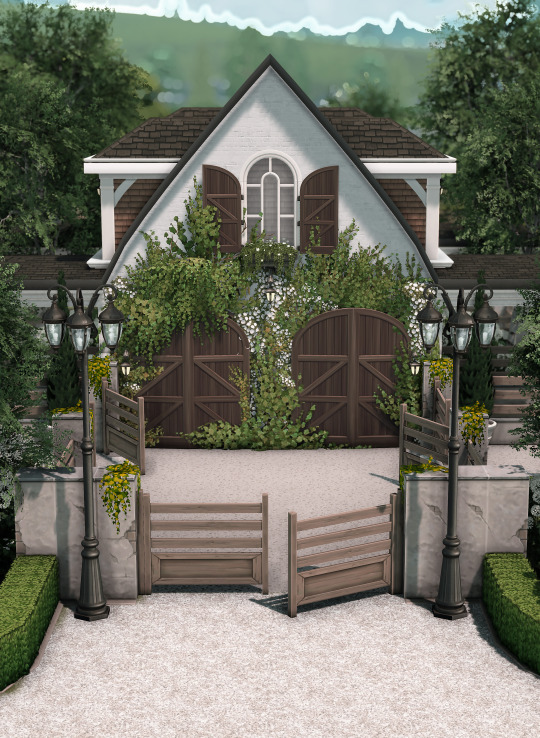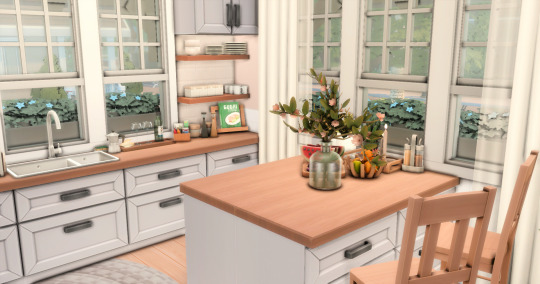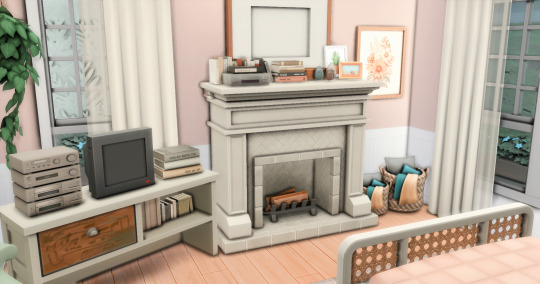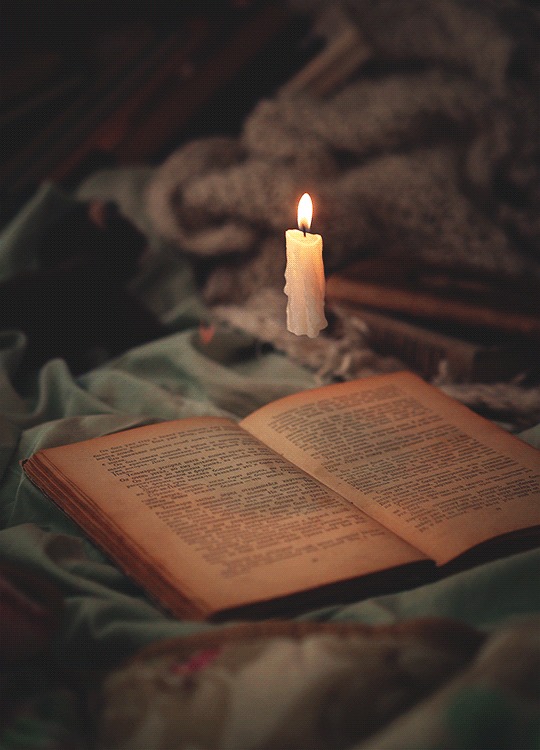#building tips
Text


Countryside Farmstead 🐄
#farfallasims#countrysidefarmstead*#henford*#sims 4 interior#ts4 interior#the sims 4 build#building tips#sims 4 build#sims build#the sims#sims 4#the sims 4#the sims community#sims 4 screenshots#sims#sims 4 maxis match#ts4 simblr#ts4 build#thesims4#sims4#the sims4#sims 4 simblr#simblr#showusyourbuilds
1K notes
·
View notes
Text

TIL that you can use exterior trim to clean up the edges of indoor floor cut outs and my life has truly changed for the better. It looks so much cleaner!
28 notes
·
View notes
Text












NEW BUILD!!!
TRAY FILE ON MY BLOG
#the sims#ts4#ts3#sims 4#sims 3#fixer upper#gameplay#challenge#pg#family friendly#build tutorial#builders bible#let's build#let's play#sims 4 building#house building#building tips#tutorial#build tips#sims tips#the sims 4 modern house#the sims 4 base game house#the sims 4#sims 4 house build#sims 4 no cc house#sims 4 speed build#sims 4 base game no cc#sims 4 house#sims 4 houses without packs
5 notes
·
View notes
Video
youtube
perfect steps to screeding to finish | shining and mixing of shining gash
0 notes
Text
Thinking of buying a block of land?

We’ve been talking to a few people recently who are wanting to buy land to build on. For everyone else out there also looking, here are a few things we’d love you to keep in mind when searching for that perfect block.
With the credit squeeze from interest rates and the cost of building so high, it can be tempting to buy the cheapest block you can find to keep your costs down. This is absolutely a great aim, but don’t automatically assume that the cheapest block will remain the best value once it’s built on. Just balance the benefits against some of the added costs it might have when it comes time to build:
Is it a sloping site? This costs more than a flat site to build on; sometimes considerably so. The greater the slope, the more extra costs there will be. There might be earthworks, the costs of moving to a split-level or two-storey design, scaffolding costs. Then there can be access issues which slow down construction (time is cost), and give design limitations. There’s also usually extra landscaping costs; and it’s usually more cost effective to do these before building than after. Overall you could easily be adding many tens of thousands of dollars of extra construction costs to your build.
Soil type matters. Some soils aren’t worth building on at any cost; we know of at least one subdivision in town where there are a multitude of cracking problems in the houses caused by the soil, so choose a block on good soil (you can read more about this here in a previous post)
Is it serviced? Blocks out-of-town which aren’t connected to town services; electricity, sewer or water, all cost more to set up than simply connecting into the council-provided systems. If you have to provide all three of these services yourselves, you could be looking at up to $100K extra costs. For power, you’ll either have to pay for extra poles/wires if they are close, or for an off-grid solar system. You’ll need an on-site sewage management system, which these days mostly means an aerated treatment system. Then you’ll have to provide tanks both for your drinking water and for the bushfire fighting reserve; to council’s requirements, and come up with a plan for water supply to water your gardens.
Bushfire Zone? Bushland and trees around the block might bring a site into a bushfire zone, which means extra costs for bushfire safety inclusions (you can read more about this here in a previous post)
Landscaping. Larger blocks mean you will have extra costs for setting up and landscaping. This doesn’t relate directly to building, but as a general rule it means your driveway will be longer, your garden larger, there’ll be more fencing. All of these will add to your costs after your house is built so it looks the way you want it to.
So to keep your costs in check, do yourself a favour when you are searching for blocks to buy: consider these points and choose wisely. Happy shopping!
0 notes
Text
World Building Checklist
Have you ever started writing a story and realized your world has a bunch of unexplained shit and you have to fill in the gaps as you go? Me too, buddy. Me too. Here’s a checklist so that you can fully flesh out your world to the max. (I’m dying)
How does Time work? (Minutes, hours, days, the daylight cycle, years, ect.)
Species (if Fantasy. Will probably make another post on this.)
Countries, Nations, Tribes, ect. (nationalities/ races. Will probably make another post on this.)
The geography of the world (draw a map. Doesnt have to be good. Just for a general idea.)
Rivalries between races (includes prejudice, racism, ect.)
Religions
Technology
The Magic system. (Will probably make a whole other post on this.)
animals, plants, ect.
The sky: Sun, Moon(s), Stars, Constellation, Are there rings? (If the planet has rings)
Educations system
Government system
Politics
Methods of transport (Vehicles)
Medicine
Can’t really think of anything else. If you have more to add then reblog and add to the list! :) bye bee
#writing advice#how to write#creative writing#writers on tumblr#writing#writeblr#world#world building#fantasy worldbuilding#fantasy writing#fantasy tips#Fantasy world building tips#Writing tips#HEAVENLYRAIN’S WRITING TIPS
2K notes
·
View notes
Text
What to give a fuck about,while writing your first draft!
I`ve posted a list about things you don´t need to give a fuck about while writing your first draft. Here are things you NEED TO CARE about! (in my opinion)
Your Authentic Voice: Don't let the fear of judgment or comparison stifle your unique voice. I know it´s hard,but try to write from your heart, and don't worry about perfection in the first draft. Let your authenticity shine through your words.
Your Story, Your Way: It's your narrative, your world, and your characters. Don't let external expectations or trends dictate how your story should unfold. Write the story you want to tell.
Progress Over Perfection: Your first draft is not the final product; it's the raw material for your masterpiece. Give a fuck about making progress, not achieving perfection. Embrace imperfections and understand that editing comes later.
Consistency and Routine: Discipline matters. Make a commitment to your writing routine and stick to it.
Feedback and Growth: While it's essential to protect your creative space during the first draft, be open to constructive feedback later on. Giving a f*ck about growth means you're willing to learn from others and improve your work.
Self-Compassion: Mistakes, writer's block, and self-doubt are all part of the process. Give a f*ck about being kind to yourself. Don't beat yourself up if the words don't flow perfectly every time. Keep pushing forward and remember that writing is a journey.
Remember, the first draft is your canvas, your playground. Don't bog yourself down with unnecessary worries.

#writing#writblr#writing advice#writers block#just writer things#creative writing#fanfiction writing#writing motivation#writeblr#original writing#writing reference#writing tips#writers on tumblr#writing resources#writing tip#writing encouragement#writing community#writers#world building#point of view#editing#character creation#dialogue#mine.#words#writingtips#writingadvice
4K notes
·
View notes
Text
a list of 100+ buildings to put in your fantasy town
academy
adventurer's guild
alchemist
apiary
apothecary
aquarium
armory
art gallery
bakery
bank
barber
barracks
bathhouse
blacksmith
boathouse
book store
bookbinder
botanical garden
brothel
butcher
carpenter
cartographer
casino
castle
cobbler
coffee shop
council chamber
court house
crypt for the noble family
dentist
distillery
docks
dovecot
dyer
embassy
farmer's market
fighting pit
fishmonger
fortune teller
gallows
gatehouse
general store
graveyard
greenhouses
guard post
guildhall
gymnasium
haberdashery
haunted house
hedge maze
herbalist
hospice
hospital
house for sale
inn
jail
jeweller
leatherworker
library
locksmith
mail courier
manor house
market
mayor's house
monastery
morgue
museum
music shop
observatory
orchard
orphanage
outhouse
paper maker
pawn shop
pet shop
potion shop
potter
printmaker
quest board
residence
restricted zone
sawmill
school
scribe
sewer entrance
sheriff's office
shrine
silversmith
spa
speakeasy
spice merchant
sports stadium
stables
street market
tailor
tannery
tavern
tax collector
tea house
temple
textile shop
theatre
thieves guild
thrift store
tinker's workshop
town crier post
town square
townhall
toy store
trinket shop
warehouse
watchtower
water mill
weaver
well
wind mill
wishing well
wizard tower
#worldbuilding#setting prompts#writer resources#writing inspiration#writing prompts#scene settings#writing reference#writing ideas#prompt list#creative writing#writing community#writer prompts#writing tips#world#fantasy world#fantasy worldbuilding#high fantasy#world building#epic fantasy#writing fantasy
2K notes
·
View notes
Text
Character Flaws
When creating characters, it's all too easy to envision the most perfect people, especially when it comes to creating love interests. Even our loveable morally grey characters are mostly perfect, if only they would stop killing...
So, here are a list of some flaws (based on personality, not appearance) to help round out your characters. While it's nice to be good at everything, it's abnormal. No one is perfect, and your characters will be much more relatable if you knock them down a bit.
Please note, none of these are (specifically) mental disorders, as I don't consider those a character flaw.
The Good (aka little flaw):
Absent-minded, aimless, argumentative, audacious, awkward, blunt, bold, boring, capricious, childish, clumsy, competitive, complainer, cowardly, critical directionally-challenged, dubious, finicky, fixated, flake, flirty, foolish, gossipy, gruff, gullible, hedonistic, humourless, hypocritical, idealist, idiotic, ignorant, illiterate, immature, impatient, impetuous, impulsive, incompetent, inconsiderate, indecisive, indifferent, indomitable, irrational, lazy, lustful, materialistic, meddlesome, meek, mischievious, nagging, naive, nervous, nosey, obnoxious, overambitious, overconfident, overemotional, overprotective, overzealous, passive-aggressive, paranoid, peevish, perfectionist, pessimist, pest, predicatable, pretencious, prideful, rebellious, renege, rigorous, sarcastic, skeptic, seducer, selfish, self-righteous, shallow, slacker, solemn, spacey, spoild, squeamish, stubborn, supersticious, sycophant, tactless, tease, tempermental, tenacious, theatrical, thoughtless, timid, unpredictable, unsupportive, vain, workaholic
The Bad (aka big flaw):
Addiction, adulterous, aloof, anxious, apathetic, arrogant, belittling, belligerent, bigmouth, bitter, bully, callous, deceptive, dependant, deranged, dishonest, disloyal, disrespectful, egotistical, envious, erratic, exploitive, fanatical, fickle, fierce (at the extreme), gluttonous, greedy, harasser, hubris, impious, infamy, intolerant, judgemental, lewd, liar, meglomaniac, morally grey, narcissistic, negligent, obsequious, obsessive, offensive, prejudiced, quixotic, reckless, rigid, self-martyr, self-righteous, short-tempered, spiteful, squanderer, stingy, unethical, unforgiving, untrustworthy
The Ugly (aka cross the street when you see this person):
Abusive, bigot, controlling, cruel, explosive, immoral, inhumane, intolerant, machiavellian, manipulative, murderous, neglectful, oppressive, racist, remorseless, possessive, self-destructive, threatening, treacherous, vengeful, vindictive, violent
The seven chief features of ego: self-deprecation, self-destruction, martyrdom, stubbornness, greed, arrogance and impatience.
Some of these may not even be considered flaws, and some may jump from one category to the next. It's all about how you present these flaws in your characters.
Have any more to add? Did you find this useful? Let me know down in the comments :)
#creative writing#novel writing#writer#writing advice#writing community#tumblr writers#writing#writeblr#fiction#character flaws#character development#fictional characters#writing tips#writing resources#character building
5K notes
·
View notes
Text
Want to worldbuild like a pro??
(📖 Master tips and everything I know📖)
Hello writers! You don't know how to worldbuild? Don't know where to start explaining the world you have created? Don't worry, you are in the right place! I have been there myself, and after many research (and even more trial and error) I have put together a list of the best worldbuilding tips I have encountered, and also created some of my own. (I know the first one is kind of overheard, but trust me).
Don't start right away with worldbuilding. A long paragraph about how your world works and its history might overwhelm new readers. A lot of other writers suggest waiting and learning about the world at the same time the protagonist does, or if that doesn't work for your story, dropping bits of information while the story moves forward. However, if you want to give a sense of how your world works from the start...
Exposition through action. This is my favorite method, and it helps a lot if you don't want to pause your story to info dump about the world you have created. Instead, this method relies on explaining the world and its dynamics while you continue with the narrative, briefly. For example: "As always, you couldn't see any trees in the meadow. The king had ordered years ago to cut each one of them because of a prophecy that foretold that the last dragon egg would lay in an oak."
Use expressions that reference normality or routines. In the last point, we used "as always", but there are tons of expressions you could use in your writing. This helps the reader understand what is the norm in this new world and what things are common, to later detect something that is not within that norm (or sometimes just to understand the world and its traditions better).
Use flashbacks when necessary. If you need to explain a very specific or detailed topic, I suggest using a flashback scene, that will help the reader understand with the narration and dialogue, instead of just explaining it to them. It makes for a more dynamic learning experience. But, at the end...
Do whatever will intrigue you. Some readers even like info dumps, and there is not one correct way to show your world. If it would make you curious, go and do it, wether people say it's correct or not. There are a lot of successful books that randomly stop to explain something about the world, and there is nothing wrong with that if you like it.
Hope you find this list useful, and as always happy writing :)
Also, if you are interested in tips or more examples of a specific topic, you can always leave a question in my ask. I'd be glad to answer it!!
Other tips for writers: previous
#writeblr#writing#writer#writers#writers on tumblr#writerscommunity#writers of tumblr#creative writing#current wip#world building#worldbuilding#tips for writers#tips#writing tips
487 notes
·
View notes
Text
Scene Building: If you don't have anything interesting to say--don't say it.
The basics of building a scene is this: it should have a reason to exist. However, “reason to exist” is a bit more specific than 'it exists to fulfill a purpose'. A scene in which two characters go to the store to get eggs for a cake technically fulfills this brief—the scene exists for a reason; the characters need eggs for their cake so they go get some.
The problem here is that a scene in which two characters go to the store and get eggs and then go back home is… boring, or at least actually unnecessary.
So really, your scene needs to fulfill a practical function (characters reach or fail their goal) and a secondary function—character dynamics or development is explored, background is revealed, arcs are furthered, friendships are formed or tested or broken, etc.
If two characters are baking a cake but they need eggs and nothing new or interesting happens at the store, the scene can be skipped in a sentence or two:
“given the unfortunate lack of eggs present in the fridge, John and Hector took a short trip to the corner store, gathering a carton of eggs for too much money before they headed home.
'Time to get cracking on this cake,' Hector said.”
However, if there is something new or interesting to say at the shop—the clerk is John’s ex, all the town’s stores mysteriously closed at 2pm, Hector takes the walk alone to tell his friend something he’s been too scared to say—that makes it a scene worth your time.
So really, the basics of building a scene is: if you don’t have anything interesting to say—don’t say it at all. Or otherwise, a scene should always be doing at least two things, goal and character, character and goal.
What are some other rules for building scenes you’ve heard of?
#writing#writers#writing tips#writing advice#writing inspiration#creative writing#writing community#books#film#filmmaking#screenwriting#novel writing#fanfiction#writeblr#scene building
1K notes
·
View notes
Note
If you dont mind me asking, how did you get good at building in ts4 i always scrap my builds so i would love any beginner tips you offer
Hi, of course I don't mind!
My biggest tip is to use reference photos for inspiration of your builds. For my York St./Flat White Kitchen build, this is what originally inspired the exterior & interior. Is it an exact carbon copy? I WISH! But with the references I used, I was able to create something unique but semi-accurate to the photos used.


To add to this, do not be mad at yourself if it isn't exactly like the pictures your using. Realistically it's very hard to recreate everything you see, so have fun with it! I don't hold myself to any standard or expectation when going into a build, I just let my instincts take over and go through a process of trial and error.
Also, having reference photos can influence you to use CC you don't typically use or trying different styles which then is a great way to practice! It's fun to try different styles and aesthetics and cluttering techniques. It's all about learning.
Believe me, I do scrap builds and there is plenty of stuff you guys have never seen from me! But all you can do is just keep trying, keep practicing, and go through scrapping, rebuilding, all that stuff to get better.
I hope this lil ramble helps you out a bit!
30 notes
·
View notes
Text
How to write the cold
The way we feel cold is universal, but the way we contextualise it is not. Cold has a variety of connotations for readers, so it's important to decide how to use it, and what mood you want to convey in your scene.
While cold is often associated with negative aspects in writing, if there's anything the winter season teaches us, is that it can be a positive thing as well. Rather than just using the word cold, in your next writing project, try to contextualise it. Describe the weather, the light on the snow, the comfort of warmth after an icy swim, or the fear and loneliness of the dark on a cold night.
Here are our quick tips on how to write the cold:
In nature
Clean mountain air
Glittering ice crystals
Unique wildlife, like snow hares or polar bears
Snow muffled sounds
Steam rising from hot springs
Icy water in rivers and lakes
Overcast and rainy
Bright sun on fresh snow
Icebergs, glaciers, and ice floes
Storms and blizzards
Branches moving and creaking
Frozen ponds
Morning frost on grass
Snowdrops pushing through snowdrifts
Crisp and clear night skies
Wolves howling in the dark
Bare branches scraping against windows
Eerie shadows
Foods and objects
The scent of cinnamon and nutmeg
Heavy winter coats and scarves
Rich, hot meals with lots of gravy
Tea or coffee left out too long
Ice-cream, sorbets, or ice-lollies
Metal that is cold to the touch (like pots and pans or door handles)
Cold beverages straight out of the fridge
An icy bath
Freezer trucks or walk-in refrigerators
Dry ice
Crisp, fresh sheets on cold nights
Ice sculptures
A tap with a drip that freezes in place
Frozen celebratory drinks (like daiquiris)
A single cube of ice floating in a whisky glass
A cold pack for an injury
Character moods
Isolated
Lonely
Aloof
Sad
Comfortable
Snuggly
Focused
Panicked
Indifferent
A lack of affection
Calm and calculated
Disengaged
Serene
Depressed
Awestruck
Anxious
Reverent
Melancholy
Nostalgic
Impatient
Frustrated
Reflective
Character body language
Hunched shoulders
Crossed arms
Shivering
Snuggling into something warm
Rub hands together for warmth
Tight or strained expression
Biting dry lips
Furrowing brow
Glaring against brightness
Tense and rigid stance
Stand close to others
Slow, deliberate steps
Move quickly to somewhere warm
Sitting relaxed in a warm space
Actions and events
Start a fire or build a shelter
Winter hikes
Outdoor activities like skating, skiing, or sledding
Traffic jams or snowed in cars
Frozen lakes cracking underfoot
Dodging icicles falling from rooftops
Going ice-fishing
Long sea voyages
Frostbite
Suffering from a cold, the flu, or pneumonia
Brainfreeze
Snuggling under a warm duvet
Sipping from a steaming hot drink for comfort
Cold-water swimming
Walking to work in the rain
Christmas in the Northern Hemisphere
Chrismas in July in the Southern Hemisphere
Reading a good book by the fire while it snows outside
Positive aspects
While cold is often associated with negative emotions, using it as a juxtaposition can often help to accentuate the positive feelings you want to convey.
If it's cold outside, a character enjoying a hot chocolate under their duvet will give a much more positive impression than if they were simply staying in bed.
The beauty of the natural world in winter, like snow, ice, and winter foliage can also be used to create a scene of happiness and wonder.
Negative aspects
Cold is often used to describe characters who are emotionally detached, calculating, or generally unfeeling. It's become an easy way to clue your readers in to how they're meant to feel about your character.
There are also more creative ways to use the cold, however, like describing the disappointment of forgetting about a hot drink you put down somewhere and only remembering when it's already gone cold, or the feeling of shock after you first step out of a warm shower.
Helpful synonyms
chilly
frigid
icy
wintry
frosty
cool
nippy
freezing
glacial
brisk
chilled
cool
polar
bitter
snowy
raw
refrigerated
arctic
rimy
draughty
#writers#creative writing#writing#writing community#writers of tumblr#creative writers#writing inspiration#writeblr#writerblr#writing tips#writblr#writing advice#writers block#creative inspiration#writing ideas#descriptive writing#world building#setting the scene#writing characters#writing help#learn to write#writing resources#creative writing tips#tips for writers#help for writers#writing references#advice for writers#let's write#writers corner
1K notes
·
View notes
Text
The Five Types of Readers That Read Your Fantasy Book (For Writers)

As a fantasy writer, understanding your target audience is crucial for the success of your book. Knowing the different types of readers who are drawn to the genre can help you tailor your writing to their preferences and create a more engaging experience. In this blog post, I'll help you explore the five types of readers that are likely to read your fantasy book and provide insights into their characteristics and expectations.
The Escapist Reader
The first type of reader is the Escapist. These readers are looking for a break from reality and crave immersion in a rich and imaginative world. They are drawn to epic quests, magical creatures, and fantastical settings. As a writer, you can capture their attention by crafting a vivid and detailed world, filled with intricate plotlines and larger-than-life characters. Engaging their sense of wonder and providing an escape from their everyday lives will keep them hooked from the first page to the last.
The World-Builder
The next type of reader is the World-Builder. These readers are fascinated by the intricacies of world-building and the lore that shapes the fantasy realm. They enjoy exploring the history, mythology, and geography of the fictional world you create. To captivate these readers, focus on developing a well-constructed and cohesive world that feels authentic and believable. Pay attention to the small details, establish consistent rules of magic, and provide glimpses into the rich tapestry of your universe.
The Character-Driven Reader
Another important type of reader is the Character-Driven reader. These readers are emotionally invested in the journeys and growth of the characters they encounter. They want to experience the highs and lows alongside the protagonists, forming deep connections with them. To engage these readers, focus on creating well-rounded and relatable characters with compelling arcs. Develop their motivations, flaws, and relationships to evoke empathy and resonate with your audience on a personal level.
The Plot-Oriented Reader
The fourth type of reader is the Plot-Oriented reader. These readers are primarily interested in the twists, turns, and surprises that unfold throughout the story. They enjoy intricate and well-paced plots that keep them guessing. As a writer, you can capture their attention by crafting a narrative with unexpected twists, clever foreshadowing, and satisfying resolutions. Keep the suspense high and deliver a satisfying payoff to keep these readers engaged and coming back for more.
The Theme-Seeker
The final type of reader is the Theme-Seeker. These readers are drawn to the deeper meanings and messages embedded within a story. They enjoy exploring philosophical, moral, or social themes that resonate with them on a personal level. As a writer, you can captivate these readers by weaving thought-provoking themes into your narrative. Explore complex issues, challenge societal norms, and offer unique perspectives to stimulate their intellect and leave a lasting impact.
Conclusion
Understanding the different types of readers that are drawn to your fantasy book can help you tailor your writing to their preferences and create a more immersive experience. Whether you are capturing the attention of Escapist readers, captivating the World-Builders with your intricate lore, evoking emotions in Character-Driven readers, surprising Plot-Oriented readers, or stimulating the intellect of Theme-Seekers, knowing your audience is key. By crafting a story that resonates with these reader types, you increase your chances of creating a loyal fan base and achieving success as a fantasy writer.

Blow your readers mind.
Happy writing!
#thewriteadviceforwriters#writeblr#creative writing#writing#writing tips#on writing#writers block#how to write#writers and poets#writing plot#character building#character creation#writing resource#world building#narrative#novel writing#writing blog#writer#writing community#fantasy novel#fiction#author#self published#novella#self publishing#romance novels#fantasy fiction#fantasy#high fantasy#medieval fantasy
568 notes
·
View notes
Video
youtube
how to do window frame work design like a Pro
0 notes
Text
World Building
Creating Land
❂
⥇ agriculture
⟿ what is grown in abundance? how common is farmland? where is the farmland?
⥇ architecture
⟿ what kind of buildings? how tall/spacious? what are they made of? how well made? how well planned?
⥇ animals
⟿ what wild animals are lurking in the area? hunting? any animals affecting the livestock or agriculture?
⥇ biomes
⟿ desert? tundra? grassland? forest? savanna?
⥇ bodies of water
⟿ seas? lake? ponds? rivers? fresh water/salt water? fishing? keep in mind, settlements are often built near bodies of water
⥇ climate
⟿ dry? rainy? temperate? tropical? polar? how have people adjusted to this climate?
⥇ elevation
⟿ altitude? how does the altitude affect lifestyle?
⥇ geology
⟿ rocky? types of rocks?
⥇ landforms
⟿ mountains? valleys? plateaus? plains? hills? glaciers? peninsulas? volcanos? canyons?
⥇ latitude / longitude
⟿ location on planet? how does it affect other elements of land?
⥇ livestock
⟿ common domesticated animals? common animal usages?
⥇ minerals
⟿ any valuable minerals / metals? are they mined regularly? how are they used?
⥇ natural disasters
⟿ earthquake? tornado? volcano? duststorm? flood? hurricane? tsunami? how often do these occur? protocols?
⥇ population
⟿ how many people? how dense is the population? how does the population affect surrounding nature?
⥇ resources
⟿ what is abundant? scarce? how are they used? how available are they?
⥇ sacred land
⟿ religiously important land? historical importance? widely accepted as sacred? how is it honored?
⥇ soil
⟿ good or bad for vegetation? rocky?
⥇ tectonic activity
⟿ earthquake frequency? volcano frequency? trenches?
⥇ topography
⟿ how common are maps? how accurate? how long have they been around? who makes them?
⥇ vegetation
⟿ what is abundant? scarce? what grows easily? with difficulty? what is commonly foraged? who forages? plant types? tree types?
#writing#writing tips#story ideas#reference#fantasy#knowledge#writing reference#landscape#creating land#world building
10K notes
·
View notes